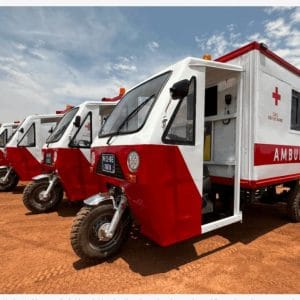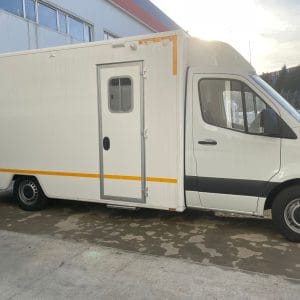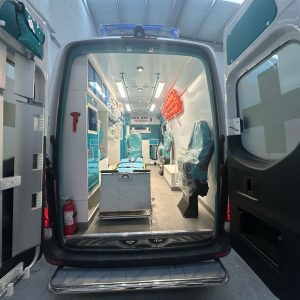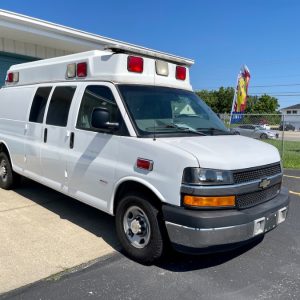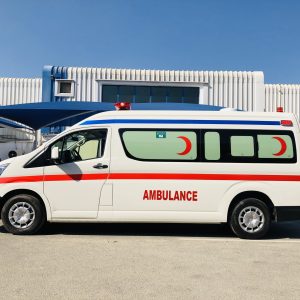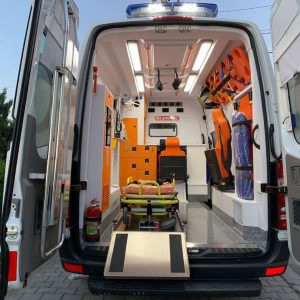ICU Automotive: Engineering Excellence in Emergency Medical Vehicle Manufacturing
Ambulance Manufacturing ; in the critical world of emergency medical services (EMS), the vehicle is far more than just transport; it is a frontline mobile medical unit, a lifeline for paramedics, and the first chapter of a patient’s survival story. The difference between a standard van and a purpose-built ambulance can be measured in seconds, outcomes, and lives saved. This is where specialized ambulance manufacturing becomes paramount. Leading this charge with a reputation for innovation, reliability, and unparalleled quality is ICU Automotive, a name synonymous with excellence in emergency vehicle production.
This deep dive explores how ICU Automotive has established itself as a premier ambulance manufacturer, detailing its philosophy, the cutting-edge features of its vehicles, and the rigorous process that turns a chassis into a life-saving fortress on wheels.
Beyond Conversion: The ICU Automotive Philosophy
ICU Automotive operates on a foundational principle: an ambulance is a collaborative ecosystem where automotive engineering, medical functionality, and human ergonomics must seamlessly intersect. They are not merely converters; they are original equipment manufacturers (OEMs) and engineering specialists who design from the ground up.
This philosophy is built on three core pillars:
- Clinical Efficacy: Every design decision starts with the medical mission. How can the layout improve workflow during a cardiac arrest? How can equipment be mounted for instant access? How can the environment enhance patient stability en route to the hospital? ICU Automotive works directly with medical professionals to answer these questions, ensuring their vehicles are designed by the people who use them.
- Vehicle Safety & Reliability: A broken-down ambulance is a tragedy. ICU Automotive builds on the world’s most reliable commercial chassis—like the Mercedes-Benz Sprinter—and enhances them with reinforced suspensions, all-wheel-drive systems for all-terrain access, and comprehensive electrical systems with redundant power supplies. Their focus on driver and occupant safety includes advanced stability control, reinforced cab compartments, and systems that allow emergency lights and climate control to run while the vehicle is locked and stationary.
- Technical Innovation & Compliance: Adherence to international standards (like European CEN1789 and others) is the baseline. ICU Automotive goes beyond compliance, integrating future-proof technology, advanced materials, and smart systems that make ambulances safer, more efficient, and easier to operate.
The Anatomy of an ICU Automotive Ambulance: A Technical Overview
What truly sets a specialist ambulance manufacturer apart is the depth of its engineering. An ICU Automotive vehicle is a masterpiece of integrated systems.
1. The Foundation: Chassis and Drivetrain
ICU Automotive typically utilizes proven platforms like the Mercedes Sprinter 4×4, known for its durability and performance. Key enhancements include:
- 4×4 All-Wheel Drive: Provides critical traction for reaching patients in remote areas, industrial sites, or in adverse weather conditions.
- Reinforced Suspension: Handles the additional weight of medical equipment and ensures stability during high-speed emergency driving.
- Powerful Engines: Modern, efficient diesel or petrol engines (e.g., a 211 HP Euro VI compliant engine) provide the necessary power for rapid response while meeting stringent emission standards.
2. The Medical Module: The Heart of the Operation
The patient compartment is where ICU Automotive’s expertise shines. It is a custom-designed environment built for life-saving interventions.
- Ergonomic Layout: Designed around the principle of the “golden minute,” everything a paramedic needs is within easy reach. This includes strategic placement of the electrical stretcher system, medical gases, and storage for vital equipment.
- Advanced Stretcher Systems: A core feature is the electropneumatic or automatic load system, often with a 500 kg capacity. This allows a single medic to safely load and unload a patient. The accompanying electrical stretcher features Trendelenburg and reverse Trendelenburg positions for critical patient management.
- Medical Gas System: A comprehensive and safe system is integrated, featuring multiple oxygen cylinder holders (e.g., for 10L and 2L bottles), up to 7 oxygen outlets, and both electrical and mechanical suction units (Venturi aspirators).
- Intelligent Storage: Custom-designed cabinets with shock-absorbent foam inserts secure everything from ventilators and monitors to medication and trauma kits. A “dumbwaiter” pass-through from the cab is a common feature for secure equipment transfer.
3. The Electrical Nervous System: Power and Control
Perhaps the most critical system is the independent electrical network.
- Dual-Circuit System: The ambulance’s medical equipment operates on a separate electrical system from the vehicle’s engine, powered by heavy-duty AGM batteries (e.g., 95Ah or larger).
- Automatic Battery Management: An intelligent system with a charger and automatic separator ensures the starter battery is always prioritized, preventing the medical systems from draining it. This allows all medical equipment, lighting, and climate control to function for hours with the engine off.
- Comprehensive Control Panel: An interior panel allows medics to control lighting, heating, ventilation, and air conditioning (HVAC). The vehicle features a powerful stationary air conditioner (e.g., 8600 frigories/10KW) that works independently of the engine.
- Abundant Power Outlets: Multiple 12V and 220V sockets on independent circuits power vital equipment like portable ventilators, monitors, and suction units without risk of overload.
4. Safety and Durability: Protecting the Protectors
- Driver and Crew Safety: Features include driver and passenger airbags, a reinforced partition with a large communication window, and three or more specially designed crew seats with 3-point safety belts that are crash-tested and certified.
- Materials and Finishing: The entire interior is lined with non-porous, easy-to-clean, and disinfectant-resistant materials. All seams are sealed to prevent pathogen harboring, crucial for infection control.
- External Features: High-intensity LED warning lights, lightbars, and sirens ensure visibility and audibility. The vehicle is often finished in high-visibility colors with reflective decals.
The Manufacturing Process: From Blueprint to Deployment
The journey of an ICU Automotive ambulance is meticulous:
- Consultation & Design: Working with the client to define specifications and create detailed CAD designs.
- Chassis Preparation: The base vehicle is stripped and prepared for upfitting.
- Body Building & Integration: The module is constructed, and all systems—electrical, plumbing, climate control—are integrated.
- Equipment Installation & Calibration: All medical devices are installed, secured, and calibrated to function in a mobile environment.
- Quality Assurance & Testing: The completed vehicle undergoes rigorous road testing, system checks, and compliance validation.
- Client Training & Delivery: End-users are trained on all vehicle systems before final handover.
Conclusion: The ICU Automotive Standard
Choosing an ambulance manufacturer is one of the most significant decisions an EMS provider can make. It impacts crew safety, patient outcomes, and operational costs for years to come.
ICU Automotive represents the pinnacle of this specialized field. Their commitment to engineering excellence, clinical understanding, and unwavering quality ensures that every vehicle they produce is not just a means of transportation, but a fully equipped, resilient, and intelligent partner in pre-hospital care. For teams that refuse to compromise on the tools they use to save lives, ICU Automotive provides the definitive platform—merging the trusted reliability of a global automotive brand with the precision of a world-class medical device manufacturer.



